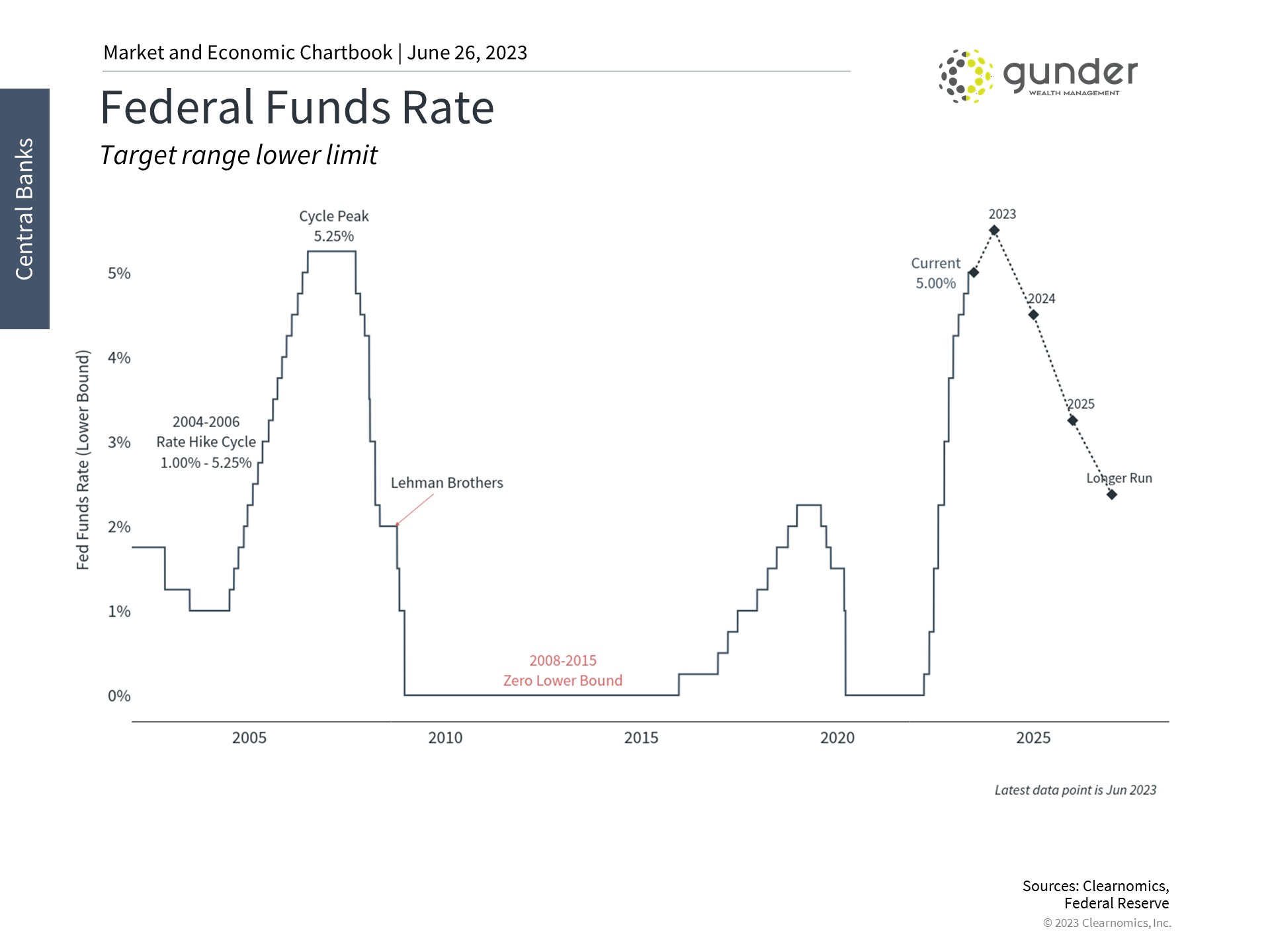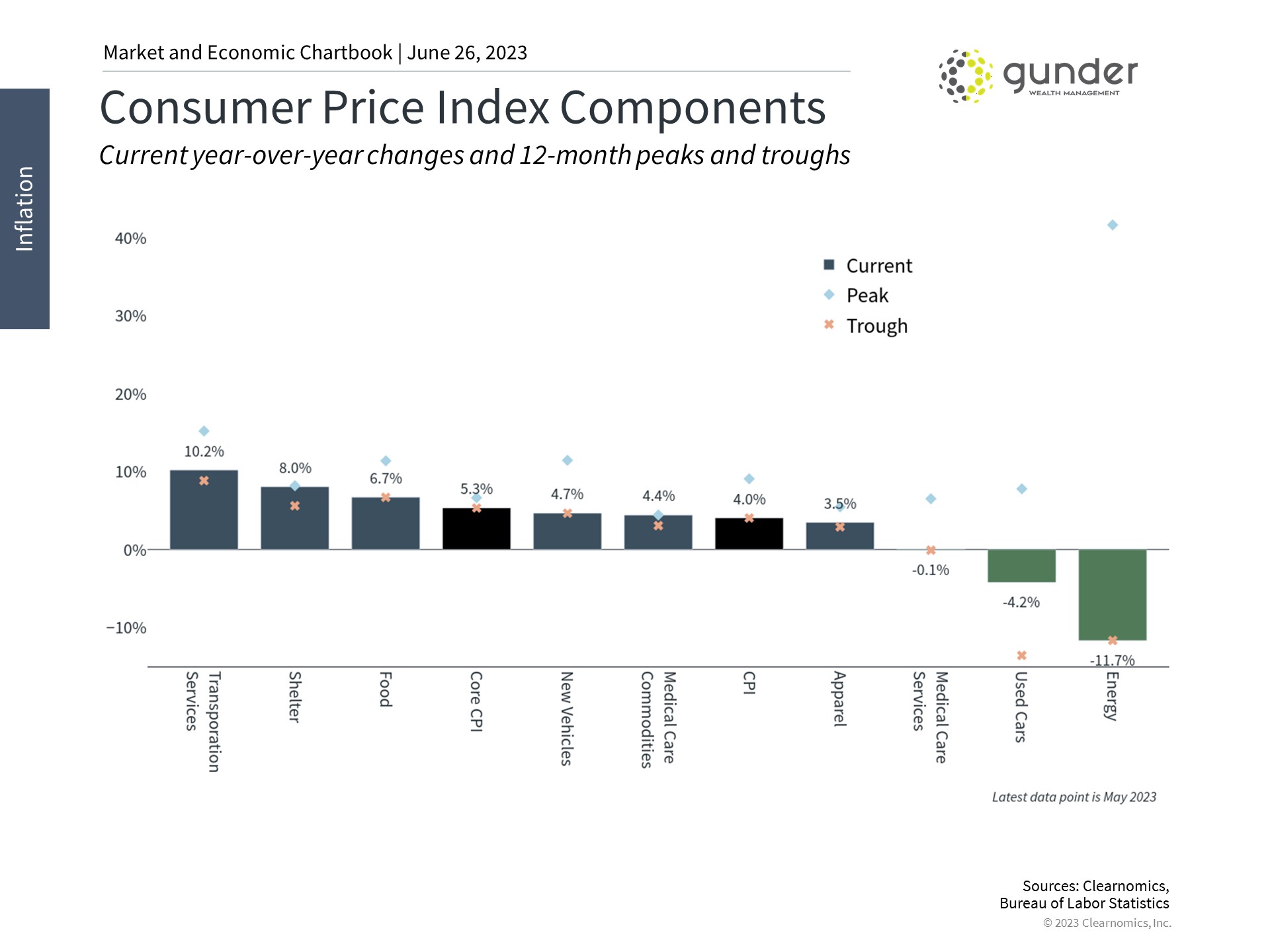
What does a hawkish pause mean for YOU?
At the June meeting, the Fed decided to hit pause on rate hikes after more than a year of rapid monetary policy tightening. Since last March, the Fed raised rates ten times from zero to 5%, making this the second-fastest rate hike cycle in history!
Some consider the Fed’s latest decision a “hawkish pause” since policymakers penciled in two additional rate hikes later this year.
With rates expected to remain higher for longer, what do long-term investors need to know?
The simplest way to understand the Fed’s latest move is that it’s consistent with a slower pace of rate hikes rather than a complete shift in policy.
Since last December, the Fed steadily decreased the size of each rate hike from 75 basis points (i.e., 0.75%), to 50 bps, to 25 bps, and now possibly to 25 bps every other meeting.
At his latest press conference, Fed Chair Powell inadvertently referred to the June decision as a “skip,” which implies he could raise rates again in July. See the chart below graphing rates from 2005 through 2025. The projected figures are largely dependent on inflation.

The Fed is targeting an interest rate level that is restrictive enough to slow inflation.
The most recent CPI report shows that overall inflation has decelerated to 4% on a year-over-year basis. This is a significant improvement from the 9.1% pace experienced a year ago.
Gas prices fell 19.7%, energy prices fell by 11.7%, and used cars fell 4.2% (see chart below).
Other measures of inflation, such as the Producer Price Index, made even more progress, with the headline index rising only 1.1% year-over-year.

Why would the Fed keep rates high if inflation is improving?
The real challenge facing policymakers continues to be core inflation, a concept that excludes food and energy prices.
Core inflation rose 5.3% in May compared to a year earlier – an improvement from its peak of 6.6% last September.
The main driver is the cost of housing (i.e., referred to as Shelter in the CPI report), which increased 8% over this period and represents a third of the CPI index.
Excluding shelter from core inflation, prices rose 3.4%.
From an economic perspective, “sticky” inflation threatens an inflationary spiral. This is when higher prices result in higher wages, which in turn results in more spending and even higher prices. Sticky inflation is exactly what the Fed is trying to avoid!
Higher rates slowed some parts of the economy, most notably in the financial and real estate sectors.
Fortunately, the banking crisis in March appears to be stable and has arguably benefited banks with strong balance sheets.
Residential real estate continues to struggle with an average 30-year fixed mortgage rate of around 7%. But, there are some signs that housing activity is stabilizing.
Commercial real estate remains the biggest wildcard as refinancing uncertainty continues.
In contrast, many parts of the economy remain unusually strong.
This allows the Fed to raise rates at a slower pace.
Unemployment is still exceptionally low, and the FOMC’s latest projections show that they expect it to rise to only 4.1% by year-end.
The stock market has taken recent events in stride, with the S&P 500 climbing 15% this year, 23% since the bottom last fall. The S&P 500 sits only 8% below its all-time high achieved at the beginning of 2022.
The bottom line?
The Fed took a hawkish pause by skipping a rate hike in June due to improving inflation. But he didn’t rule out raising rates again later this year. Either way, rates will likely remain higher for longer, especially as other central banks continue to tighten policy. Investors should focus on their long-term financial goals as Fed policy evolves.
Connect with us if you want to chat more about how this impacts your plan.
All views, expressions, and opinions in this communication are subject to change. This communication is not an offer or solicitation to buy, hold or sell any financial instrument or investment advisory services.
